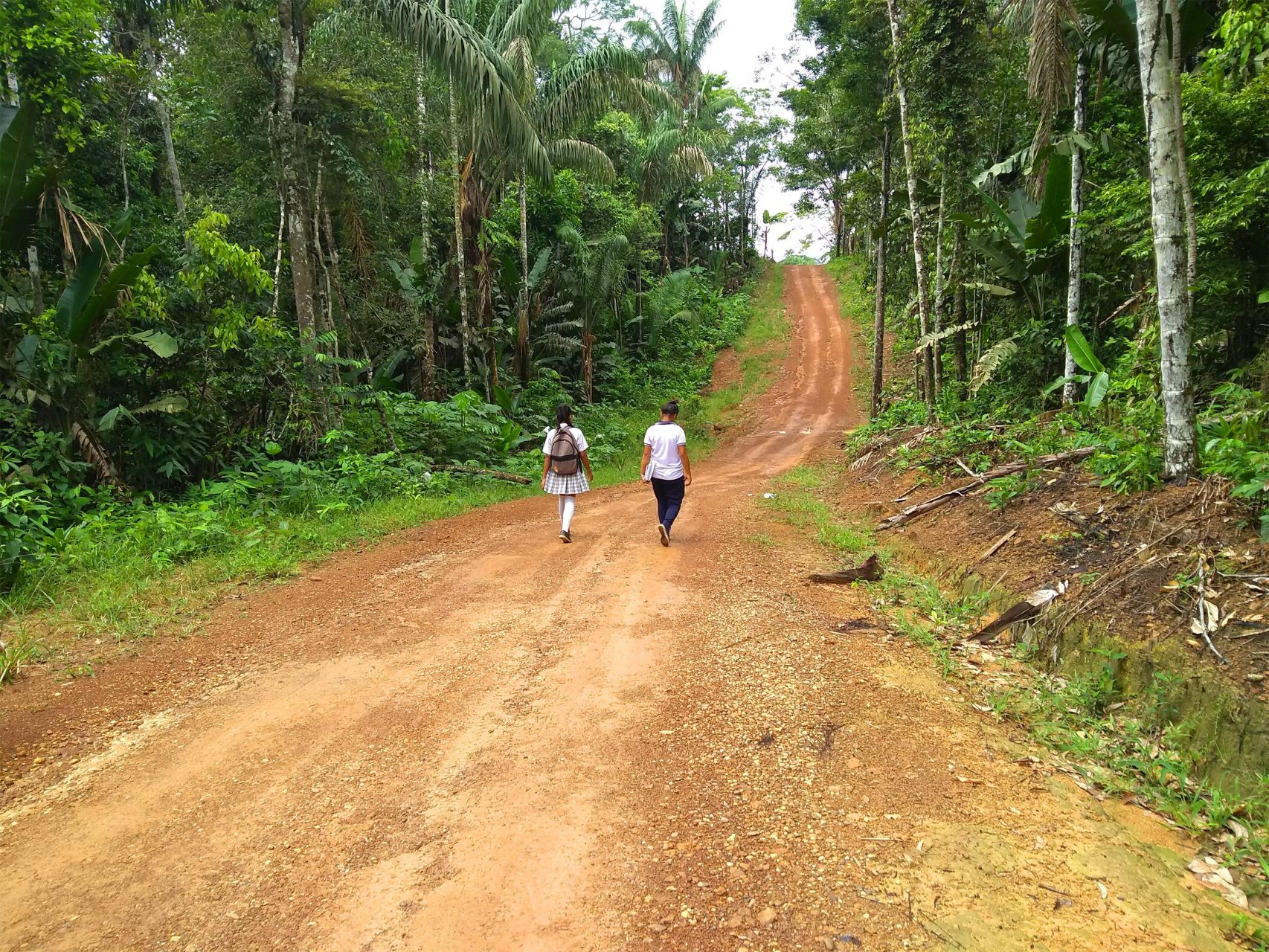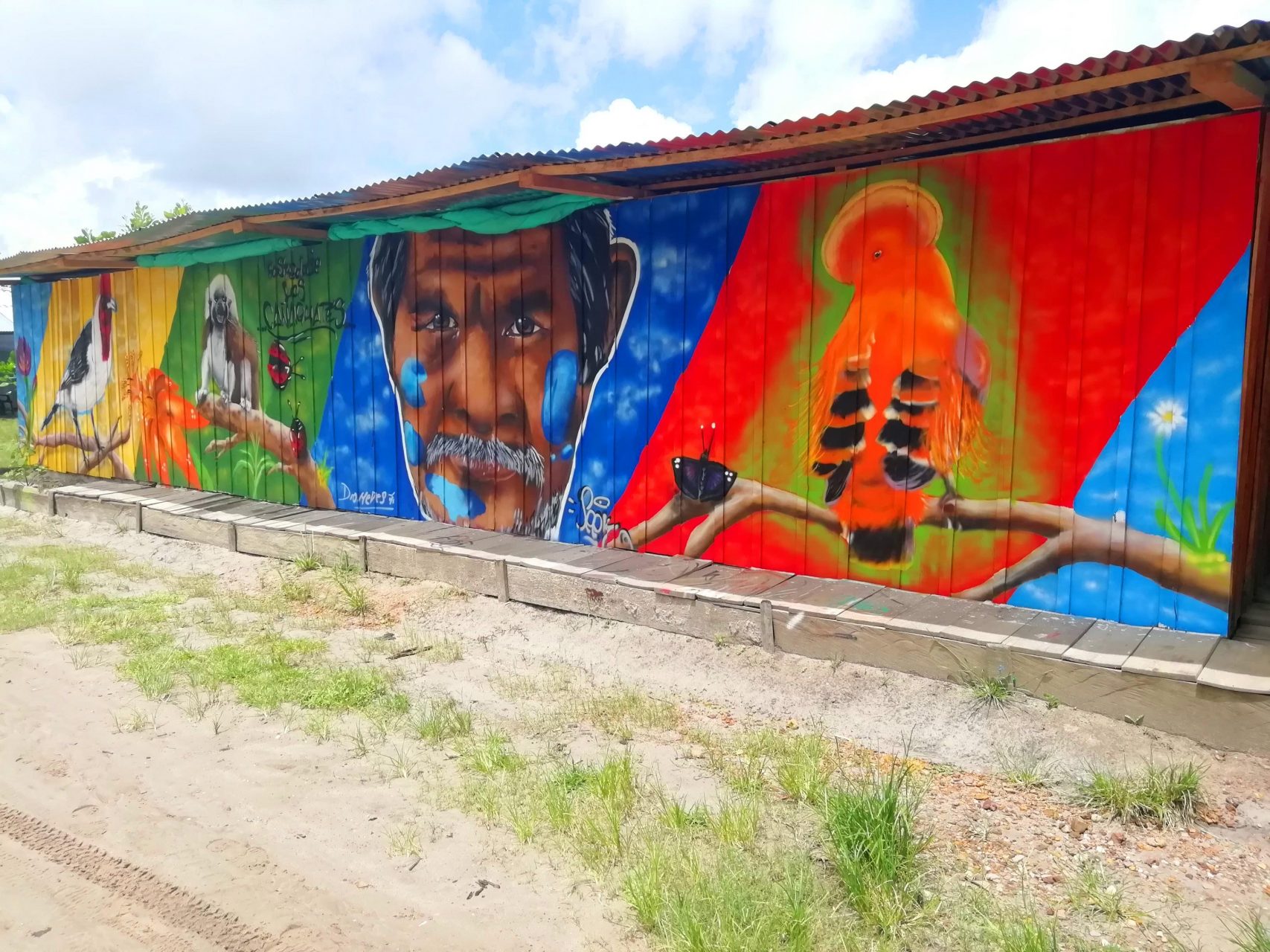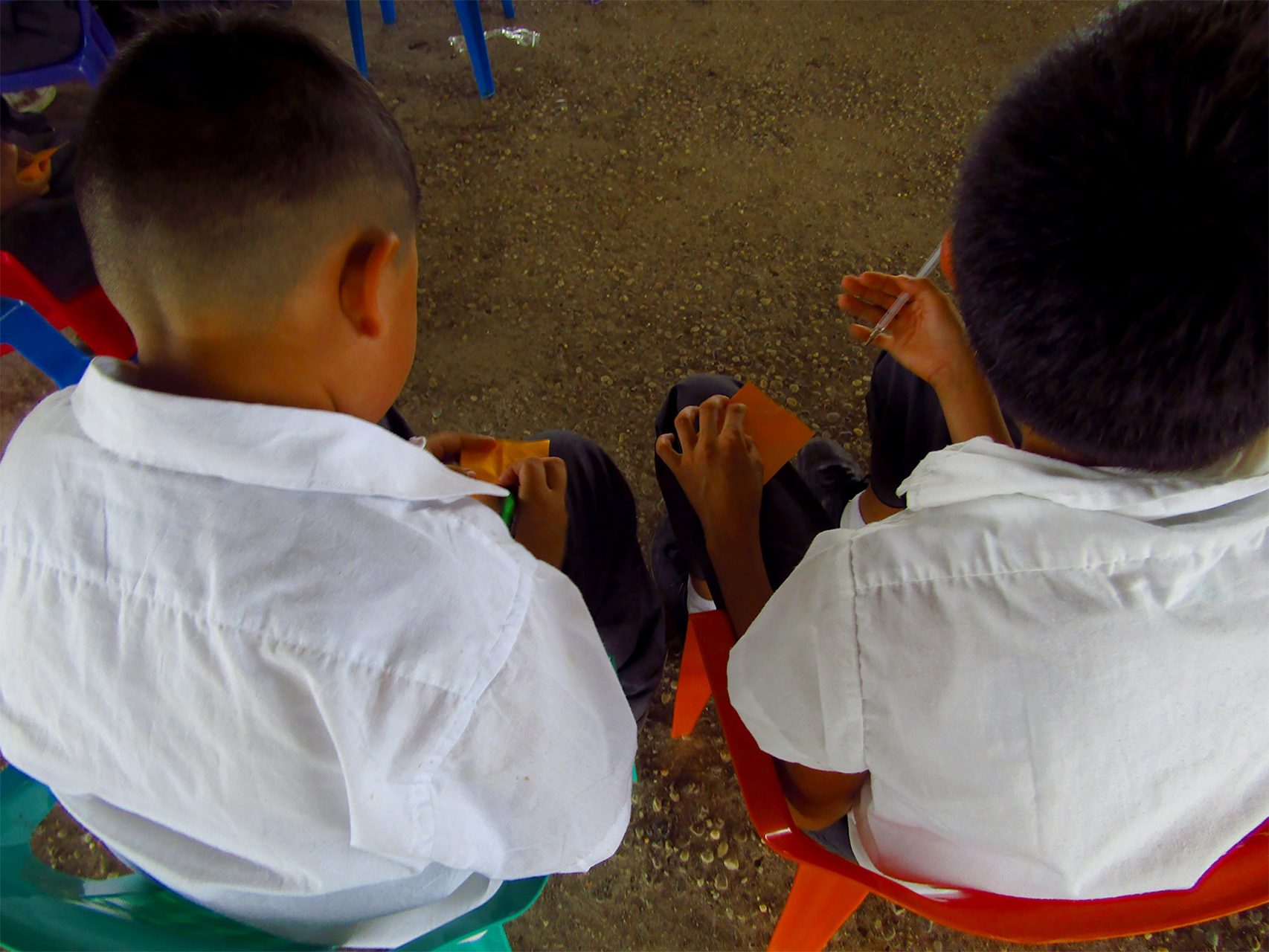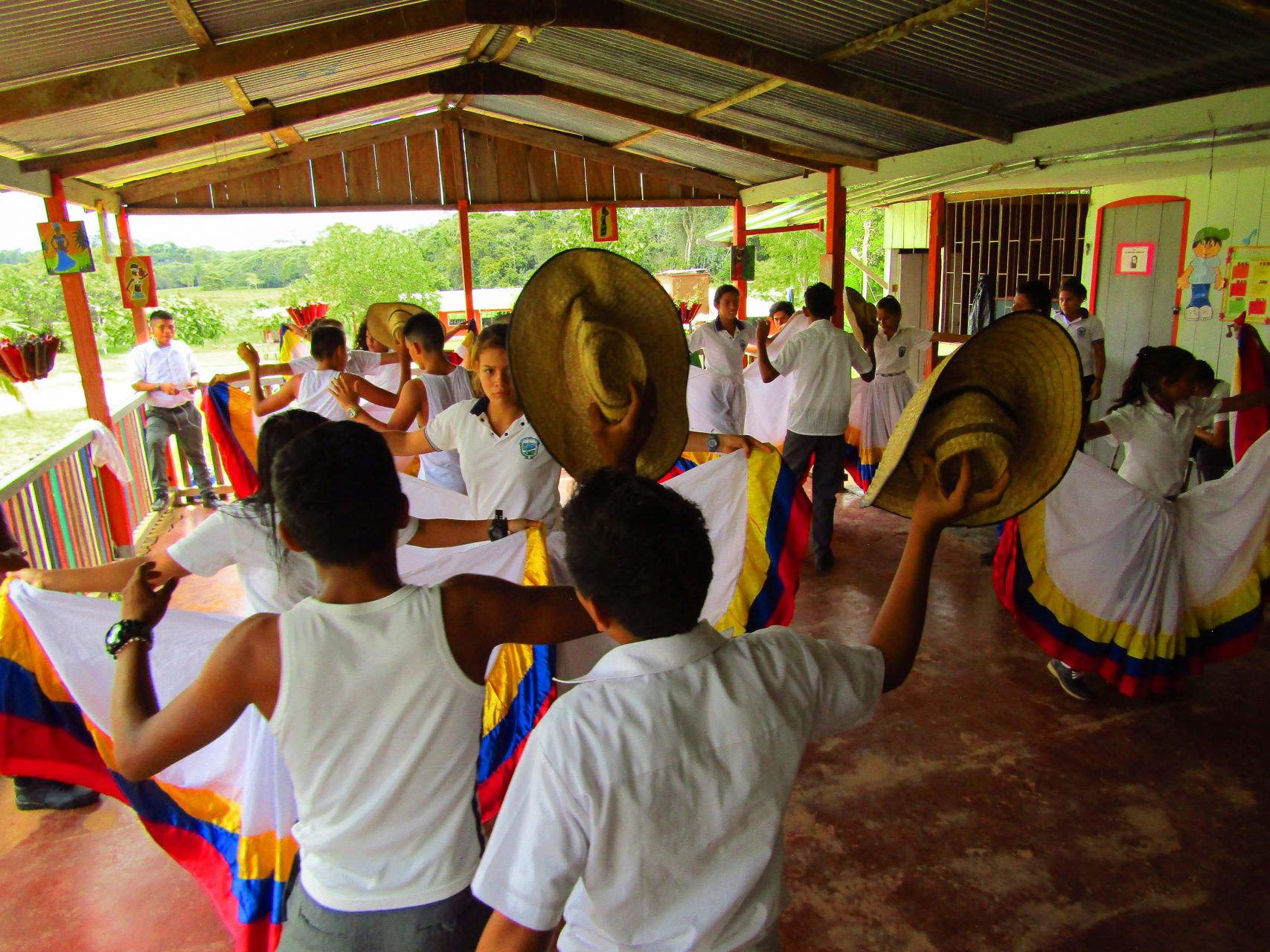The Case of Training and Talent Schools for Children in a Reincorporation Space of Ex-combatants of the FARC Group

In this essay, I will address the issue of hope based upon the importance of artistic and cultural education for communities in post-conflict areas, using the example of the reincorporation process of a community of ex-combatants from the FARC group in Colombia. For this, the issue of the conflict and the historical violence that was ended thanks to a peace agreement around 2016—and which led to a rethinking of Colombian society—will be addressed.
Subsequently, I will address the case of a community of ex-combatants during their process of reincorporation to civil life, and how the emergence of initiatives and groups for education, culture, and sport has promoted processes of reconciliation, appropriation of territory, and social projection. Finally, I will make some conclusions about the importance of artistic and cultural training in the construction of community identity and conflict resolution.
Colombia has had a history of violence for more than fifty years. Two of the main actors in this history were guerrilla and paramilitary groups. Disputes between these groups and the Colombian army have destroyed many lives. Thousands of people have migrated from towns and rural areas to cities to protect themselves, and this has generated problems of land distribution and employability. Since the 1950s, Colombian governments have tried to solve this problem, and have made arrangements for these groups to cease fighting and surrender their weapons. The demobilization of one of the most heavilyarmed guerrilla organizations, the FARC group, began to be carried out in 2016, which has opened the path to a process of reintegration into civilian life.
This process, which has been accessible to people who demobilized after 24 January 2003, is accredited by the Office of the High Commissioner for Peace (CODA). Two of the main requirements to be included in the process is not having committed crimes against humanity, and not having violated the International Humanitarian Law. People who could participate included those who took part in the Revolutionary Armed Forces of Colombia (FARC), the National Liberation Army (ELN), the Popular Liberation Army (EPL), and the United Self-Defense Forces of Colombia (AUC).
At the end of 2016 and the beginning of 2017, 24 Transitional Normalization Zones were established in rural areas across Colombia in order to guarantee a definitive ceasefire, to stop bilateral hostility, and to start the reintegration process. With the stabilization of health, education, and production facilities by mid-2017, the Transitional Zones were transformed into Territorial Training and Reincorporation Spaces (ETCR), and they began to be administered by the National Reincorporation Agency (ARN).

In the Territorial Training and Reincorporation Spaces, activities facilitated the initial phases of adaptation of former members of the FARC-EP group into civilian life. These spaces also presented an opportunity to bring governorships and mayorships to the population that resides there. It should be noted that since the former members of the FARC-EP received accreditation, they have full citizenship and the right of free movement, and are not required to live permanently in the ETCRs.
These spaces were intended to have a duration of 24 months, which means that their transitory legal status was going to end on 15 August 2019, and could then be administered by the same community, with support and advice from governmental entities and international organizations. This does not represent the disappearance or eviction of the 24 spaces inhabited by ex-combatants and their families. These spaces continue to exist, and it is the decision of each family either to continue to participate in their activities or to emigrate to other areas of the country. However, permanence in some of these areas presents difficulties due to natural risks, a lack of access roads and public services, and other factors, all of which are continuously being resolved.
I was able to work personally with the community of ex-combatants at the ETCR Jaime Pardo Leal (JPL) in a cultural and educational management project. This allowed me to engage with the primary school staff there, as well as with several dance and sports schools. The ETCR JPL is located in the village of Colinas, in the district of El Capricho, in the municipality of San José del Guaviare, in the southeast of Colombia, just on the border of the Amazon forest. To get there from the capital, a distance of nearly 730 kilometers, takes 13-16 hours.
The role that training in culture and education plays in a post-conflict scenario must transcend the standardized profiles of the reintegrated citizens, and instead offer the opportunity for the resurgence of community principles, giving the opportunity to think ahead from hope. Among the educational initiatives created for the benefit of the inhabitants of the Territorial Area are primary and secondary schools. The New Generation school is located on the high ground of the ETCR, and is dedicated to providing primary education to 30 children between the ages of 6 and 10. The teacher in charge is responsible for at least five levels of education, hygiene management, and the children’s nutrition.
The Crystal educational institution, located in the village hills, a 40-minute walk from the houses of the 15 young people who come from the ETCR, is responsible for training secondary students until the 9th grade. The institution also provides education to children from distant villages, and is therefore a boarding school. The main concerns expressed by teachers at this institution include the elevation of children and adolescents to a dignified life, respect for that dignity, and the recognition of children as social subjects.
Their work is coordinated with institutions like the Benposta charitable organization and the SENA (National Learning Service), which has made it possible to finance the micro-enterprises of young people and to provide high-quality education and training in agricultural subjects. Thanks to this, young people can get ahead by adding to the knowledge learned in school.

To support extracurricular training, the Raíces de Mi Tierra (Roots Of My Land) Foundation has created a dance group with about 20 young people from ETCR. The group has been able to participate in numerous dance competitions throughout Colombia, and they have received various awards. Other foundations have been providing equipment and infrastructure to promote sports such as soccer and football. This addresses issues of reconciliation and reintegration through the activity of sharing sporting events in healthy coexistence. It has also kept the young people motivated by working several days a week and on weekends.
The community has also set out to manage its own artistic and cultural initiatives. One of them is a communications and journalism group, led by a former combatant and made up of young people from other groups. Its leader intends to focus the group’s activity on environmental issues in order to promote sustainability practices within the territory. It has also managed to acquire photography and audio-visual recording equipment through various government entities, as it is committed to finding opportunities to strengthen the education of young people and the dissemination of knowledge created and recorded by themselves.
The young people themselves have expressed interest in starting their own productive ventures, for which they have begun to work with FAO staff, who carry out training and workshops on Food Sovereignty and who advise projects on the cultivation of fruit trees and cassava in the Territorial Area.
For their part, leaders of the indigenous population, also ex-FARC combatants, are very interested in the creation of a Museum Of Indigenous Memory. According to them, this will allow young people to know their history and to understand the reasons why they are in the process of reconciliation and reincorporation.
Among the external initiatives that have been recognized by the population of the Space, the International Development Design Summit (IDDS), developed in 2018, brought together people from different parts of Colombia and the world in an effort to create technologies and companies with the support of the local population and members of the IDIN (International Development Innovation Network) as a means of bringing together and reconciling communities in conflict.
In conclusion, it can be seen that the motivation to learn has been mixed with the hope of the population to seek reincorporation into civil life and reconciliation with Colombian society. The children and young people called to take part in the artistic, sports, and cultural training groups have promoted internal improvement processes because they have been able to expand their training expectations thanks to the good results they have already experienced. Their participation in these groups has also increased their sense of belonging to the territory, and has increased the knowledge of families regarding their human, political, social, and environmental rights.
It is noteworthy that the existence of instruments that ensure the participation and representation of the different voices within the ECTR has allowed the resolution of conflicts without the need to again resort to violence. This has caused the population, of their own free will, to reaffirm their intention to rejoin civil society.

Glossary
National Reincorporation Agency (ARN): This entity of the Presidency of the Republic is dedicated to encouraging people who leave illegal armed groups to become citizens with the rights and duties of all Colombians.
Reintegration: A process that seeks to develop citizen skills and competences among demobilized people. It promotes the return of the demobilized population to legality in a sustainable way. Persons in the process of reintegration receive economic support and perform social services, fundamental to generating spaces for reconciliation.
Reincorporation: A process of socio-economic stabilization of ex-combatants who surrender their weapons within the framework of the Final Agreement between the State and the Revolutionary Armed Forces of Colombia—People’s Army (FARC-EP). It aims at strengthening coexistence, reconciliation, and the development of productive activity and the social fabric in the territories.
Bibliography
Barrier, Sworn, Gloria Stella, Quiñones Aguilar, Ana Cielo. “Historical foundations of design with responsibility and social relevance.” In Socially Responsible Design: Ideology And Participation. Bogota: Ed. Pontificia Universidad Javeriana, 2009, 21-49.
Center For Social Innovation. Hunting ideas. Toolbox. National Agency for Overcoming Extreme Poverty, ca. 2014.
Echeverría Ezponda, Javier, Lucia Merino Malillos. “Paradigm shift in innovation studies: the social turn of European innovation policies.” In Arbor, Vol. 187, No. 752, 2011.
Escobar, Arturo. Autonomy And Design. The Realization Of The Communal. Colombia: Editorial University of Cauca, 2015.
Nohra Rey de Marulanda, Francisco Tancredi. From Social Innovation To Public Policy: Success Stories In Latin America And The Caribbean. Santiago, Chile: ECLAC, 2010.
Adolfo Rodríguez Herrera, Hernan Alvarado. Keys To Social Innovation In Latin America And The Caribbean. Santiago, Chile: ECLAC, 2008.
Rodrigo Martin Iglesias. Towards A New Paradigm Of Collaborative Design. Sigradi 2011 (Proceedings of the 15th Iberoamerican Congress of Digital Graphics), 1-4.
Zurbriggen, C., M. Gonzalez Lago. “Innovation And Co-Creation: New Challenges For Public Policies.” Public Management Magazine, February 2020, 329-361.
Agency For Reinstatement And Standardization. What Is Reintegration?
Industrial Designer from the National University of Colombia, interested in the topics of social innovation, health and sustainability. Throughout his academic and professional career, he has been involved in projects with a social concern focused on strengthening support, resilience and development strategies for vulnerable communities through design. While working in the field, he documents his projects through photography, as well as the places and the people involved in them.
Industrial Designer from the National University of Colombia, interested in the topics of social innovation, health and sustainability. Throughout his academic and professional career, he has been involved in projects with a social concern focused on strengthening support, resilience and development strategies for vulnerable communities through design. While working in the field, he documents his projects through photography, as well as the places and the people involved in them.
